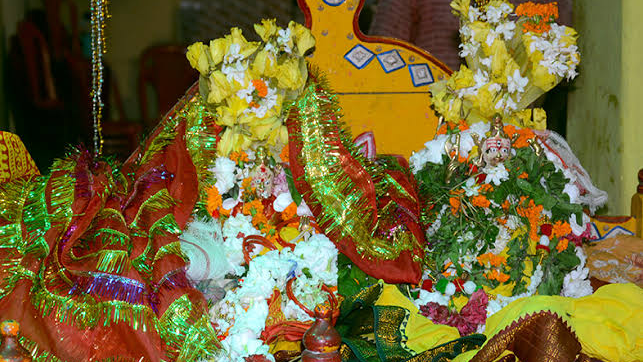

Sital Sasthi, one of the most vibrant and culturally significant festivals of Western Odisha, especially in Sambalpur, is set to be celebrated in 2025 with the same grandeur and devotion that has marked its centuries-old legacy.
Observed on the Sasthi tithi of the waxing phase of the moon in the Hindu month of Jyestha the festival symbolises the divine marriage of Lord Shiva and Goddess Parvati, and holds immense spiritual and cultural value for the devotees.
Origin:
The roots of the Sital Sasthi festival can be traced back to the reign of King Baliar Singh, the then ruler of Sambalpur.
A devout follower of Lord Shiva, King Singh introduced this festival with the desire to recreate and celebrate the celestial union of Shiva and Parvati in a ceremonial manner.
What began as a royal initiative soon evolved into a major cultural tradition and has been celebrated annually ever since, gaining widespread popularity not just in Odisha but across India.
Rituals and celebrations:
Preparations for the Sital Sasthi festival begin weeks in advance. The entire town of Sambalpur comes alive with vibrant decorations, illuminated streets, and a palpable sense of devotion. Central to the festival is the marriage ceremony of Lord Shiva and Goddess Parvati, which is conducted with the same reverence and detail as a traditional Hindu wedding.
One of the most unique aspects of the celebration is the symbolic adoption of the deities by local families. A household from the town takes on the role of Parvati’s parents, while another represents Shiva’s side, and the divine wedding is conducted with all the formalities, rituals, and community involvement seen in a real wedding.
Once the wedding is solemnised, the idols of the divine couple are adorned in elaborate attire and placed on beautifully decorated chariots. The highlight of the celebration is the grand procession Sital Sasthi Yatra in which the deities are taken across the town, accompanied by thousands of devotees.
The streets of Sambalpur during Sital Sasthi turn into a vibrant stage for cultural expression. The procession is not just a religious event but also a cultural spectacle.
It features tableaux depicting mythological tales, traditional folk performances like Sambalpuri and Gotipua dances, and musical troupes that entertain and engage the massive crowds.
Every corner echoes with drumbeats, conch shells, devotional chants, and dance performances, turning the entire city into a festive arena. Local artisans, folk musicians, and dancers find in this festival a platform to exhibit their skills and preserve regional art forms.
Preserving heritage and boosting tourism
Sital Sasthi is more than just a festival, it is a living tradition that reflects the rich cultural identity of Sambalpur. Its grandeur attracts thousands of tourists from across the country and even abroad.
For many, it is a chance to witness not just the rituals of devotion but also the deep-rooted artistic traditions of Odisha.
The festival significantly contributes to the local economy, encourages tourism, and fosters a sense of community pride.
It is a testimony to how ancient rituals continue to thrive in modern times, adapting and evolving yet retaining their essence.